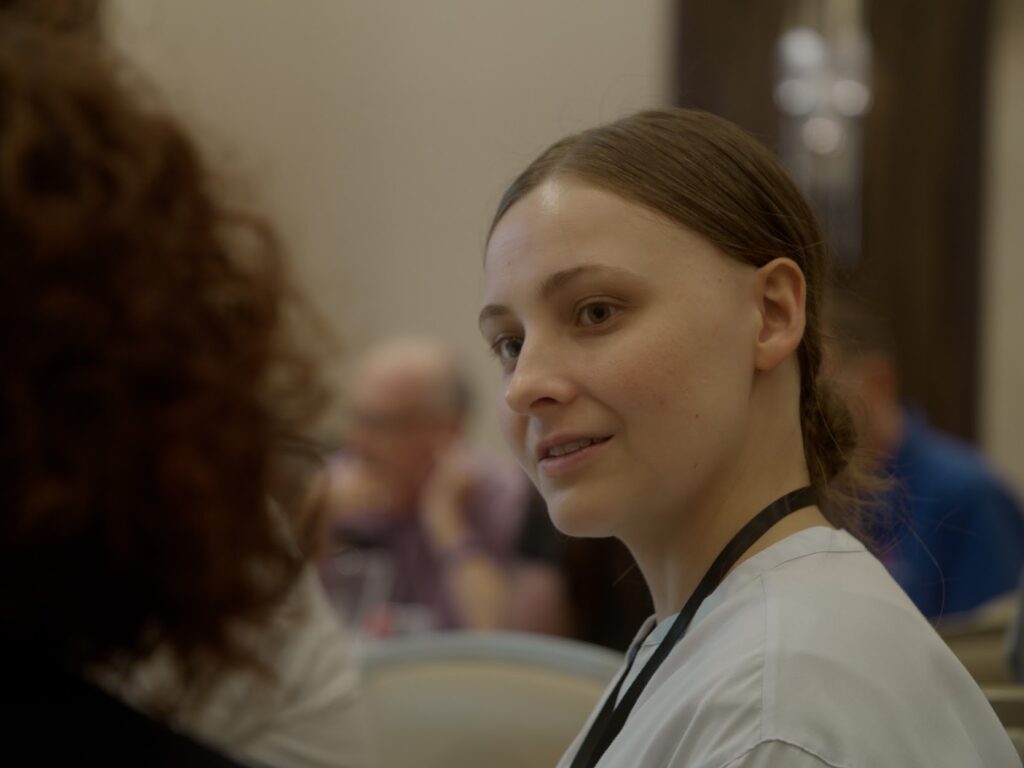April 3, 2020 / Esther Choy

A very distant cousin’s mother recently passed away. My cousin lives in the Midwest, while the rest of her family lives in Seattle. Two days after her mother’s passing, her mother-in-law called her crying, begging her not to attend the funeral.
The line of argument went like this: my cousin would have to fly. That meant she would catch the coronavirus on the plane—or, if she was spared on the plane, she would surely catch it in Seattle. And then she would die. And then her kids were going to be without a mother, her son was going to become a widower, and she would lose her daughter-in-law, and the mother-in-law herself would die of heartbreak.
It’s quite a story, full of drama and despair, but it’s hardly unique.
But there are more dangerous stories than the worst-case-scenario predictions. In the midst of the coronavirus pandemic, people are spreading conspiracy theories, racism against Chinese-Americans and misinformation about cures. Some people believe coronavirus is a Chinese bioweapon; others drink a “Miracle Mineral Solution” in hopes of a cure—despite the fact the FDA has said it would be the same as drinking bleach.
But there are more dangerous stories than the worst-case-scenario predictions. In the midst of the coronavirus pandemic, people are spreading conspiracy theories, racism against Chinese-Americans and misinformation about cures. Some people believe coronavirus is a Chinese bioweapon; others drink a “Miracle Mineral Solution” in hopes of a cure—despite the fact the FDA has said it would be the same as drinking bleach.
Meanwhile, Quora users are posing questions from, “Is the coronavirus more dangerous than the flu?” to “Is it a good time to buy stocks amidst the Coronavirus pandemic?”
All of these questions and stories point to the fact that people are wondering how to behave under this new threat.
Living Through a Story Vacuum
In urgent and ambiguous situations, people will seek out and consume plausible stories like water in the desert. It is our innate nature to connect the dots. Moreover, once an explanatory narrative is adopted, it’s extremely hard to undo— even if it is a conspiracy theory, xenophobic lie or a “cure” that can kill.
But what makes our time particularly challenging is that it’s not just the general public that lacks information. Even medical professionals are distressed at the number of unknowns. Stanford’s disease prevention expert, John P.A. Ioannidis, puts it bluntly: “The data collected so far on how many people are infected and how the epidemic is evolving are utterly unreliable.” Data is limited because testing is limited, leading experts to believe that “some deaths and probably the vast majority of infections” are unaccounted for, according to Ioannidis.
We don’t know the infection rate, nor do we know the fatality rate due to COVID-19 alone. If, in the end, there are 10,000 total deaths in the U.S. (as one of Ioannidis’s models predicts), that would look like just a worse-than-average flu season. In fact, if no one had known about this new virus, such a death rate might not have merited much media coverage at all. And even when the death rates appear grim, says Ioannidis, we must remember that “a positive test for coronavirus does not mean necessarily that this virus is always primarily responsible for a patient’s demise.”
What we need, he says, is to discover “the current prevalence of the infection in a random sample of a population and to repeat this exercise at regular time intervals to estimate the incidence of new infections.” But do we have this right now? Nope.
Lack of reliable data requires us all to suspend making premature conclusions. Unfortunately, in a story vacuum environment, hysterical emotion can easily win out. Cool-headed precaution is not very attractive at such times. And so, false stories themselves become a kind of contagion.
“Ultimately,” says Nobel-winning Economist Robert E. Shiller in Narrative Economics, “a story’s contagion rate is unaffected by its underlying truth. A contagious story is one that quickly grabs the attention of and makes an impression on another person, whether that story is true or not.” In fact, he cites one study where, “false stories had six times the retweeting rate on Twitter as true stories.” To make matters worse, he notes, “a new story correcting a false story may not be as contagious as the false story.”
So what stories should leaders be telling when there’s a story vacuum? None. We don’t know the coronavirus story yet. It’s still developing, so we can’t buy into any stories. And we shouldn’t help propagate “stories” based on unreliable data. Instead, this message should resound loud and clear:
“Say yes to precaution. Yell NO to hysteria.”
Precaution brings to mind the practices used in Singapore and Hong Kong. Large gatherings were banned, social distancing was encouraged, and people were told to work from home. Hospitals used common-sense practices like disinfecting all surfaces after seeing each patient, having all health-care workers wear simple protective gear during all patient interactions (gloves and surgical masks), separating patients with suspicious symptoms, recent travel or contact with people who tested positive, and practicing social distancing wherever possible throughout the hospital.
In six weeks, both Singapore and Hong Kong “had a handle on the outbreak,” wrote Atul Gawande on March 21. “The factors that appear to be important in protecting health-care workers from the disease have been insuring meticulous hand hygiene and cleaning; restricting clinics and hospitals to necessary patient visits; shifting as much care as possible to virtual channels (such as phone and video); and applying standard droplet precautions (surgical mask, gloves, and gown) with respiratory patients.”
How does this translate for the general public? Wash your hands very well, practice social distancing whenever possible and take more serious steps if you show symptoms or have been exposed.
But what do we do emotionally while we go through this pandemic? Laura Spinney points out that during the flu of 1918-19, “one of the worst, if not the worst, pandemics that humanity has ever known,” people looked for mystical explanations.
“Psychologically,” Spinney observes, “I think it was much easier even for people in supposedly advanced countries to try and find mystical explanations for this maybe divine punishment” for World War I. This mystical explanation did not lead to rational behavior. Instead, it encouraged people to congregate at religious services, further spreading the flu.
More recently, as West African countries confronted the widespread outbreak of Ebola in 2013–2016, the U.S. battled an epidemic of “fearbola” at home. In the U.S., fears seemed unfounded since, ultimately, only 10 cases were confirmed. Reacting with hysteria was unproductive in the U.S., but the newness of Ebola made people anxious, just as the novelty of coronavirus raises panic now.
“Novel, exotic threats like Ebola or avian flu raise anxiety levels higher than more familiar threats do,” writes Stacy Lu in the American Psychological Association’s Monitor on Psychology. “This reaction may have to do with our amygdala, which research suggests plays a role in detecting novelty as well as processing fear.”
During such times, trusted authorities must be able to boil the message down to the few things people need to know (don’t panic, wash your hands very well, limit social contact). They must figure out how to explain this simple message clearly and credibly. However, this doesn’t mean that uncertainties— like those Ioannidis notes about the lack of data—have no place.
“Science is a messy arena,” says Barbara Reynolds of the Centers for Disease Control and Prevention (CDC). She notes that ultimately communicators must give up the illusion that they can control the result of their communications. “We need to step back and allow for high emotions and missteps by people as long as we work to help them make well-informed decisions that ultimately protect them and the people around them.”
I’ve been a vocal proponent for telling stories for over ten years. Now, I’m advocating that we take a deliberate pause in telling ourselves stories related to the virus. Am I contradicting myself? On the surface, apparently so. But if you think only one layer deeper, I’m not. Stories carry powerful emotions, which are very contagious. We must live in the tension of the story vacuum.
At times like these, most stories we tell ourselves and others to fill the story vacuum (such as the one from my distant cousin’s mother-in-law) are not helping. So, let’s all take a pause and stop telling ourselves stories about this virus, at least until more reliable and scientific data is available. And instead, modifying the World War II poster just slightly: “Keep calm (wash your hands, stay home) and carry on.”
In other words, instead of telling stories, let’s tell each other, “Say yes to precaution. Yell NO to hysteria.”
But what about people who are not saying yes to precaution? Read my article about how to persuade “unpersuadable” co-workers or even bosses to take COVID-19 precautions.
Related Articles
Use Storytelling To Get People To Take COVID-19 Precautions
Are There Flaws In the Stories We Tell Ourselves?
If you’re living through a story vacuum or facing a time of high stakes and uncertainty, schedule a complimentary working session with us to communicate the right message. For more examples of the right stories to tell at the right time, sign up for our monthly guide. My book, Let the Story Do the Work (published by HarperCollins Leadership), is now available and serves as your business storytelling toolkit.
This article originally appeared on Forbes.com.
Better Every Story
"This is an amazing and insightful post! I hadn’t thought of that so you broadened my perspective. I always appreciate your insight!" - Dan B.
Join the thousands who receive Esther Choy’s insights, best practices and examples of great storytelling in our twice monthly newsletter.


